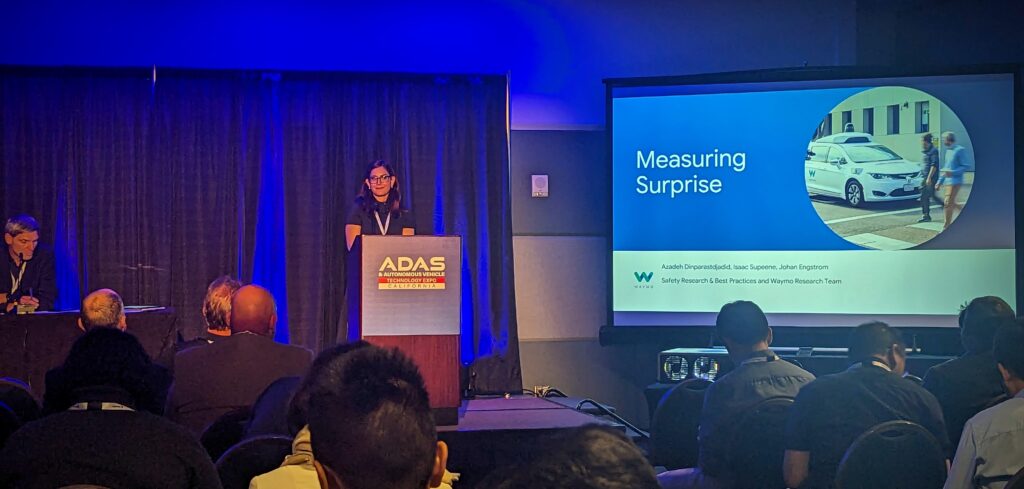One of the highlights from the conference (rates apply) at ADAS & Autonomous Vehicle Technology Expo California was a presentation from Azadeh Dinparastdjadid, a senior research scientist on the Safety Research and Best Practices team at Waymo, discussing how to measure surprising road user behavior.
“The significance of expectations and their violations [commonly referred to as ‘surprise’] in the context of road traffic has long been acknowledged,” she told ADAS & Autonomous Vehicle International. “However, despite the important conceptual role surprise plays in traffic safety research, there is no precise quantitative definition or computational model of surprise in this domain. We have demonstrated, for the first time, how computational models of surprise rooted in cognitive science and neuroscience combined with state-of-the-art ML generative models can be used to detect surprising human behavior in complex, dynamic environments like road traffic. In traffic safety, such models can support the identification of traffic conflicts, modeling of road user response time, and driving behavior evaluation for human and autonomous drivers. We also presented novel approaches to quantify surprise and use naturalistic driving scenarios to demonstrate a number of advantages over existing surprise measures from the literature.”
Dinparastdjadid hoped that the conference audience took away one key finding from her presentation: “That surprise is measurable. Our paper introduced a novel generalizable framework on how to measure surprise in real-world complex environments. In the specific context of traffic safety, we believe that surprise has many applications, including but not limited to understanding crash causation and human behavior in critical situations, and evaluating on-road behavior.
“In general, to enable wide-scale deployment and societal acceptance of autonomous vehicles, it is of key importance to ensure that they exhibit good behavior and act as a good citizen on the road. At Waymo, we have a conceptual framework called Drivership for how to think about good on-road behavior in the context of AVs. One of its principles is that AVs shouldn’t surprise other users on the road. The metrics we have developed will help pave the way to measure and then further reduce surprise from our driving behavior.”


